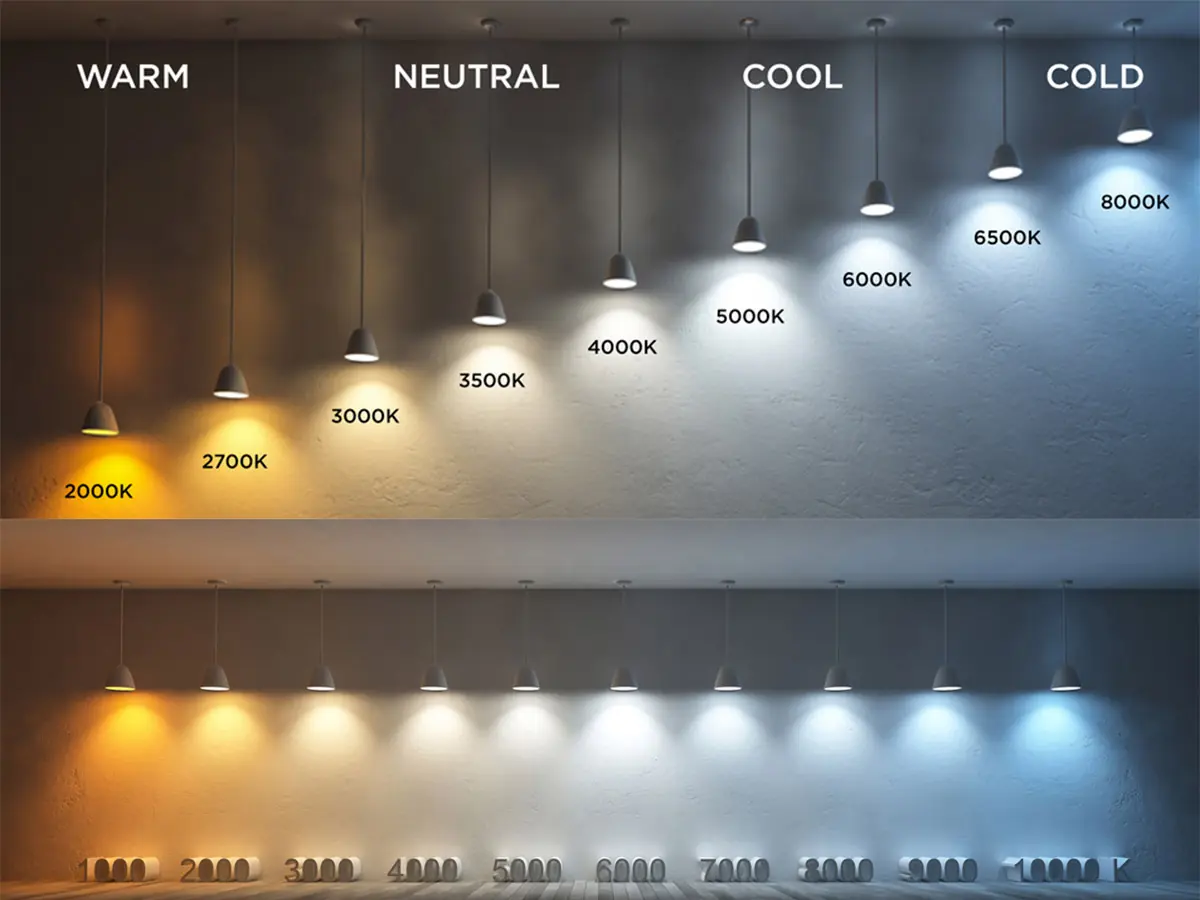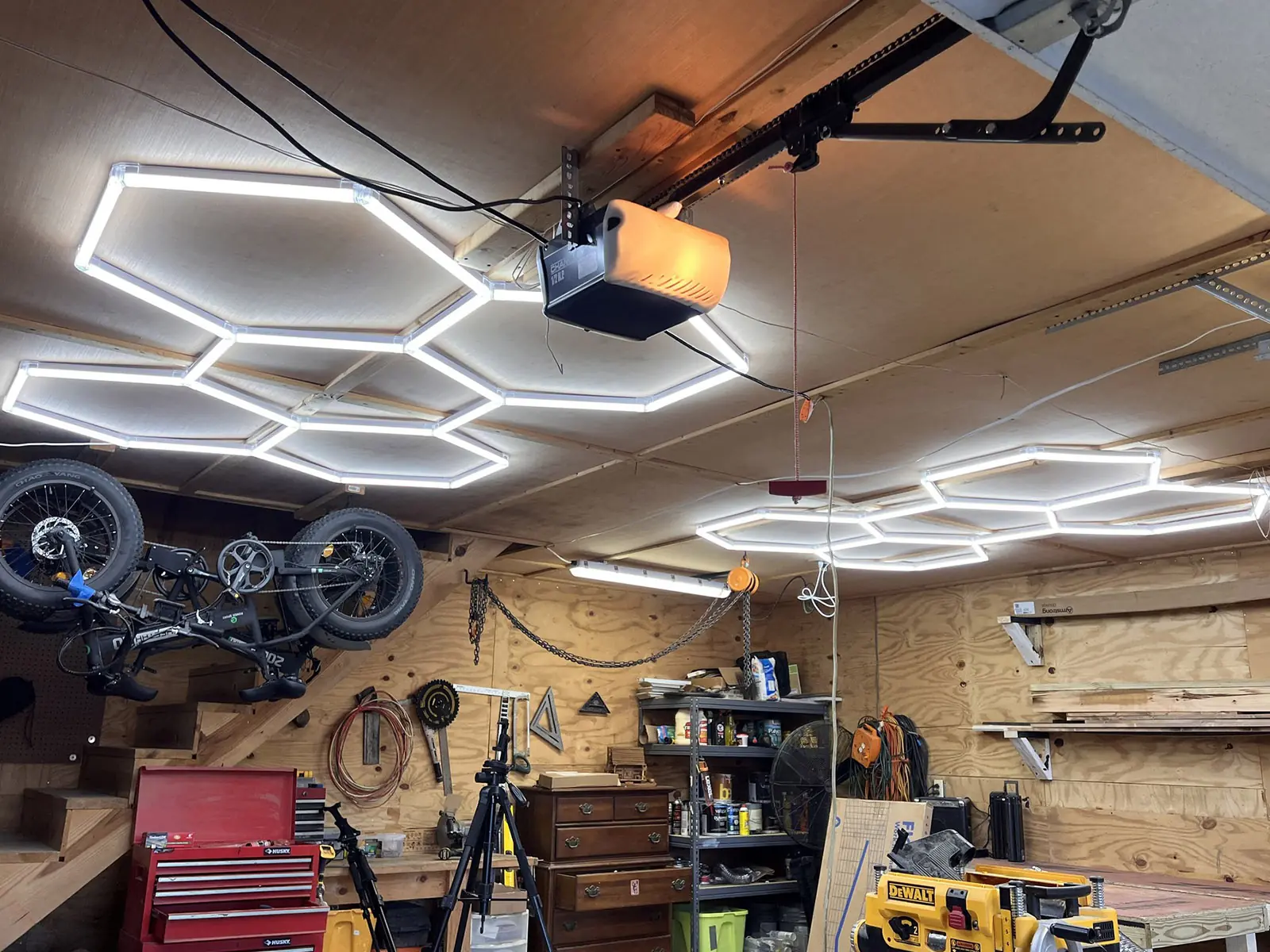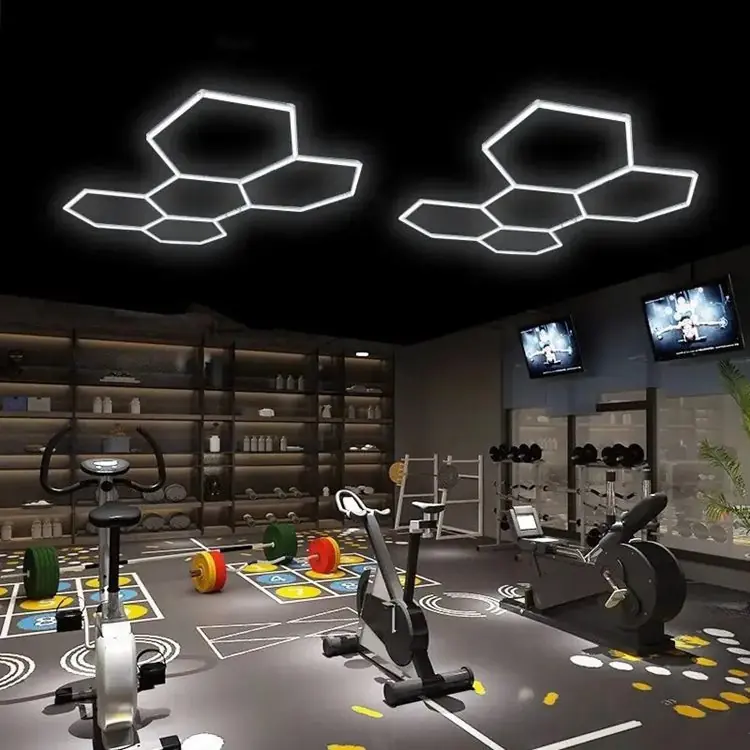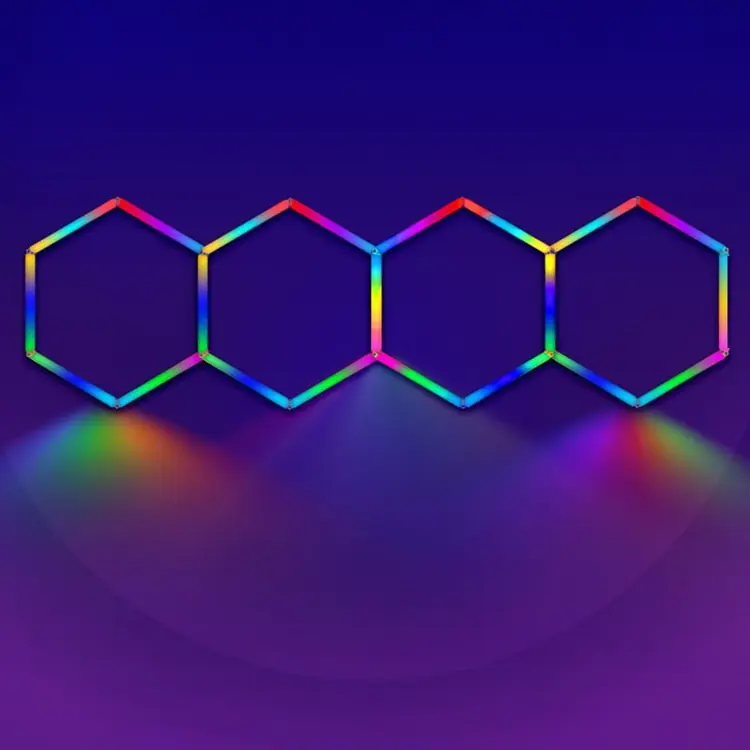-
Add: Maohui Industrial Zone,Henglan town,Zhongshan City,Guangdong,China
-
Tel: +86 158 8963 0817
-
Email: info@hexlightoem.com

Understanding Bright White vs. Daylight in LED Lighting
Table of Contents
When selecting LED lighting, two common terms arise—bright white and daylight. These lighting options differ in color temperature, ambiance, and application, making it essential to understand how each impacts your space. This article explores these differences in detail, guiding you to make an informed decision based on your lighting needs, whether for residential or commercial use.

The Fundamentals of Color Temperature
Color temperature, measured in Kelvin (K), defines how warm or cool a light source appears. It plays a pivotal role in determining the mood, efficiency, and comfort in any environment. LED lights typically offer three color temperature ranges: warm white, bright white, and daylight. Bright white and daylight are the focus here, with their distinct uses and benefits.
| Temperature Range | Color Type | Description | Best For |
|---|---|---|---|
| 2700K–3000K | Warm White | Soft, yellowish glow | Relaxing spaces (e.g., bedrooms) |
| 3500K–4100K | Bright White | Neutral, clear illumination | Kitchens, offices, workspaces |
| 5000K–6500K | Daylight | Cool, bluish-white light | Studios, task lighting, reading |
For additional high-performance LED options, consider exploring hex lights, a versatile lighting solution ideal for various indoor environments.
What Makes Bright White Lighting Special?
Applications of Bright White Bulbs
Bright white LED bulbs provide a neutral light that sits between warm and cool tones. With a color temperature of 3500K to 4100K, bright white bulbs are ideal for spaces where clarity and precision are necessary.
Common Uses:
- Kitchens: Enhances visibility during food preparation and cooking, ensuring safety and enjoyment.
- Bathrooms: Offers crisp lighting for grooming tasks without casting harsh shadows.
- Workspaces: Improves focus by creating an environment conducive to productivity.
Advantages of Bright White Bulbs:
- Versatility: Suitable for a wide range of spaces from kitchens to offices.
- Energy Efficiency: LED bright white bulbs reduce energy consumption while providing ample brightness.
- Visual Clarity: Enhanced visibility makes bright white lighting perfect for tasks requiring focus and precision.
For more information on specialized LED lighting for your workspace, check out LED hexagon lights.
The Unique Benefits of Daylight Bulbs
Where to Use Daylight Bulbs
Daylight bulbs (5000K–6500K) replicate the light of a clear, sunny day, making them ideal for environments that need natural brightness. Their bluish tint enhances concentration, alertness, and visual acuity.
Optimal Uses:
- Reading Areas: Prevents eye strain by offering balanced, natural lighting.
- Art Studios: Provides accurate color representation, helping artists and designers work with true colors.
- Task Lighting: Ideal for activities like sewing, crafting, or any precision-based task.
Benefits of Daylight Bulbs:
- Natural Light Simulation: Perfect for spaces that lack natural sunlight, bringing outdoor vibrancy indoors.
- Productivity Boost: Encourages focus, making it a go-to option for workspaces.
- Health and Well-being: Daylight bulbs can help regulate circadian rhythms, contributing to improved sleep cycles.
If you’re interested in transforming your space with daylight options, explore RGB hex lights that offer customizable color settings, ideal for creative spaces.
Bright White vs. Daylight: Key Differences
Bright White Overview
- Color Temperature: 3500K–4100K
- Appearance: Neutral, crisp light with balanced warmth and coolness.
- Best For: General-purpose use in homes and offices, where a neutral light is preferred.
Daylight Overview
- Color Temperature: 5000K–6500K
- Appearance: Cool, energizing light with a bluish tone that mimics natural sunlight.
- Best For: Task-oriented spaces like reading nooks, art studios, and offices where precision and focus are essential.
In short, bright white offers versatility for a broad range of spaces, while daylight delivers a more focused, energizing light ideal for work and creative tasks. Both serve unique purposes depending on the environment.
Brightness Levels: Which Is Brighter?
Brightness is not solely dictated by color temperature but by lumens—the measure of total light output. Both bright white and daylight bulbs are available in various brightness levels based on lumens and wattage, allowing users to customize the light intensity for their specific needs.
Considerations:
- Lumens: Higher lumens produce brighter light.
- Wattage: LEDs provide high brightness with low energy consumption, making them more efficient than traditional bulbs.
- Space Size: Larger spaces require bulbs with higher lumens to achieve adequate illumination.
For energy-efficient lighting solutions, you can explore garage hexagon lights, designed to optimize light coverage and reduce energy consumption.

Choosing Between Bright White and Daylight
The choice between bright white and daylight depends on your specific lighting needs:
For Relaxation
- Bright White: Offers a cozy, inviting ambiance, suitable for bedrooms or living rooms.
- Daylight: May be too invigorating for relaxation, especially during evening hours.
For Workspaces
- Bright White: Creates a balanced, neutral environment that is easy on the eyes and ideal for general office use.
- Daylight: Best for tasks requiring concentration, making it perfect for workshops or studios.
For Artistic or Creative Spaces
- Bright White: Provides a neutral backdrop, avoiding distortion of colors.
- Daylight: Preferred by artists and designers for its true-to-life color accuracy.
For customizable lighting setups, check out Hex Ceiling Lights, which offer flexibility and energy-efficient performance.
Conclusion
Whether you’re deciding between bright white or daylight, understanding the role of color temperature is crucial in selecting the right lighting solution. Bright white lights are ideal for versatile, everyday use, offering a neutral tone for various settings, while daylight bulbs excel in spaces requiring focus and precision. Both options provide energy-efficient LED solutions, ensuring sustainability without compromising on performance.
Explore more advanced LED lighting options for your space at Hexagon Lighting.




